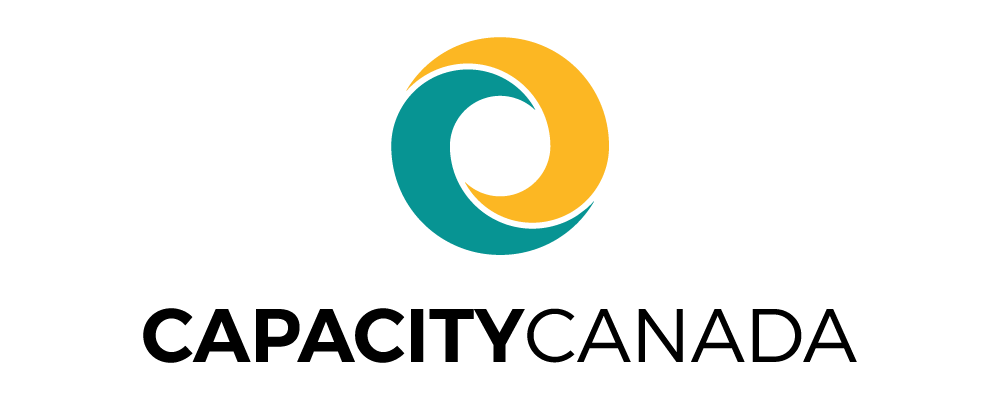Written by Martha Hancock

Last month, the federal government released the 2030 Emissions Reduction Plan (ERP) under the Canadian Net Zero Emissions Accountability Act detailing actions and pathways to reduce Canada’s emissions by 40-45% below 2005 levels by 2030. This ERP is only the first of many we can expect to see on the long journey to achieve a net zero emissions economy by 2050. Per the backgrounder, this is to be an economy-wide effort and “one of the most important undertakings in Canada’s history”. The Not-For-Profit (NFP) sector is referenced only in passing in the report (not surprisingly given its relatively low emissions footprint), but it begs the question what can and should the NFP sector be doing to play its part in a whole-of-society response to the climate emergency?
Our “third sector” is large, vital and influential. Tackling complex issues that require systems change is the sector’s bread and butter. The climate crisis, like reconciliation with Indigenous peoples and diversity, equity and inclusion (DEI), is massively intersectional. And like COVID or digitization, it is also changing the context in which NFPs operate. In the next eight years to 2030, the NFP sector needs to step up, understand the climate-related risks and opportunities it faces, play a leadership role in helping our society to transition to a new, low-carbon future, and prepare for the environmental shocks that are already unavoidable. The human cost hanging in the balance is just too high to ignore.
NFP Sector is large with a range of unique assets
Blumbergs estimates that there are ~170,000-180,000 NFP organizations in Canada, of which ~86,000 are registered charities. A 2019 Statistics Canada report published in partnership with Imagine Canada pegged the economic contribution of the NFP sector to GDP at $169.2B, or 8.5% in 2017, with an additional boost in the form of volunteerism (an estimated value of $41.8B in 2013). For clarity, this report divides the NFP sector into three groupings: business non-profit institutions such as business associations, chambers of commerce and condominium associations (10.4%), community non-profit institutions delivering services to households which includes charities and foundations (16.4%), and government non-profit institutions such as hospitals, universities and colleges (73.2%). In 2017 this sector represented 2.4M jobs across Canada. In 2018 Canadian foundations held $91.9B in assets. In 2019 the charitable sector as a whole held $500B in assets with annual revenues over $300B. Needless to say, that’s a lot of employees, buildings, vehicles, waste, procurement and assets at risk to be managed. And, of course, the reach of these NFPs is significantly greater, with beneficiaries of all kinds across all communities. Add to this the fact that NGOs lead the pack on institutional trust at 55% (Edelman’s 2022 Trust Barometer – admittedly, not a great number, but still more trusted than other institutions) and it’s clear that the sector has an incredible amount of leverage and social capital to bring to bear.
What if …
What isn’t well known by those who don’t work as sustainability practitioners is that the world is now undergoing a collective exercise in climate scenario planning. That is to say, a kind of stress-testing thought exercise, based on a series of different climate scenarios (from OK to grim to grimmer) with details on these “pathways” provided by the Intergovernmental Panel on Climate Change (IPCC), the International Energy Association (IEA) and others. The goal of these ‘what if’ exercises is to determine what risks and opportunities a business, community or government faces at various stages of global warming. This information in turn can be used to inform future strategy, risk management and planning, and also helps to make the business case for early action and investment. It is designed to provide investors with standardized, decision-useful information about material risks. This is an incredibly powerful and important turn of events. Countries are increasingly requiring large, publicly traded companies to come to grips with the climate crisis in a very granular and public way. (It’s worth noting that the results of this ‘what if’ thinking are to be disclosed publicly.) The framework guiding this endeavour is called the Task Force on Climate-Related Financial Disclosures (TCFD) and it outlines three primary categories of risk to be considered: physical risk (typically to property based on extreme weather), liability risk (how you might be sued) and transition risk (due to changing market conditions, such as people buying more bicycles or governments imposing a carbon tax).
NFPs must engage in some of their own investigation and ‘what if’ thinking when it comes to potential impacts of climate change on their organizations. The range of risks and relevance will be wide-ranging, and could be mission-related or place-based. Winter sports organizations or those based in coastal regions may categorize climate change as an existential issue; disaster relief or refugee settlement agencies may see a significant impact that could drive increased demand; youth mental health services may identify climate anxiety as a growing underlying factor in their work; chess clubs or arts groups may see little risk or relevance; while associations serving entrepreneurs may see an enticing green market opportunity. In doing this ‘what if’ thinking, NFPs may also want to take a close look at their suppliers, corporate partners, donors, and community partnerships to see if they have any exposure through those relationships. The opportune time to engage in this process is to include it as part of your strategic planning cycle, but it can easily be undertaken, documented, and made useful at any time. A primary output should be a refresh of your risk matrix to add any climate-related categories and mitigating actions. Secondarily, if you are lucky enough to have an endowment or other forms of investments, you may want to consider adding ‘managing portfolio climate risk’ to your investment policies. Remember, concerns over climate-related investment risk are now a driving factor in corporate disclosures, and an on-going issue from the point of view of securities regulators. Even that chess club will not want to lose it’s shirt over stranded assets.
Ditching plastic water bottles is not enough
Every organization, like every individual, has a carbon footprint, and it is worth it for every NFP to take the time to get familiar with theirs. The reason why the sector, despite its size, was not highlighted in the recent Emissions Reduction Plan is that as a services-driven sector, carbon emissions from operations are relatively low and mostly derive from buildings and transportation. The good news about reducing your carbon footprint (also called mitigation) is that there is often opportunity for cost reductions in your operations as a result. While vegetarian canapes at your next event may not be cheaper, LED lightbulbs and better insulation will absolutely lower your energy bill, which will likely be increasing due to the growing price on carbon. There are lots of resources out there to support employee green teams to do this work in conjunction with operations staff. Ask your suppliers the tough questions – you may be pleasantly surprised by what you hear, or you may be the voice that convinces them to make an investment to be more sustainable. Measuring and reducing your organization’s carbon footprint in line with Canada’s 2030 and ultimately 2050 goals is an important duty and one that your employees, volunteers and beneficiaries will rally around. Declare your goals, take action and share your successes. Every brand benefits from genuine environmental responsibility.
While reducing your carbon footprint may be relatively straightforward, considering how your organization will need to change to respond to a climate-changed world may actually be more complex for some NFPs than it is for many businesses. This is the adaptation side of the equation. A good starting point is to review the place-based aspects of your work in the context of local climate change projections. Does your town, city or region have a climate resiliency action plan? What are they forecasting for the places where you operate? Will there be issues delivering your services given the picture they have outlined? Another angle to explore is beneficiary-based – many NFPs provide services to vulnerable populations. How might your services to the elderly or the homeless need to change given an increase in extreme heat days, for example? Further, is there a role for your organization to play in your region’s plan? COVID has shown us that you do not need to be a disaster relief organization to make a difference in disaster response. During the pandemic, some Toronto library branches became food banks and librarians made phone calls to seniors. Many community facilities became vaccination clinics. Organizations need to accept growing volatility in their operations, and go beyond business continuity planning straight into disaster response planning. Climate change is a slow-moving but entirely predictable large-scale disaster now on our doorstep. Now is the time to think about how your organization can and will respond to a range of possible challenges.
Good governance
While your staff, volunteers, and board may be accustomed to being the front line on one particular issue, it is time to recognize that the impacts of climate change will be society-wide, and will intersect with your mission and beneficiaries in unique ways. In the last year, Canadians witnessed the devastating effects of three cascading and cumulative catastrophic weather events in British Columbia. In the first, 600 people died in 4 days due to a heat dome. This was followed by wildfires and floods. Regardless of the purpose or mission of your organization, you must consider and address climate change. Boards should not be concerned that doing this work takes them away from their stated goals or ‘charitable objects’. Rather, they are fulfilling their duties of risk oversight and ensuring long-term organizational viability by doing so. Just as being a good fiduciary regarding investments now means you must consider climate risks, so too, being a climate-competent board should now be considered part of good governance. Most NFPs have stepped up to say “Yes, we work on our mission, and we work on diversity, equity and inclusion”. Now they must also say “Yes, we work on our mission, and we have a role to play in tackling climate change”. Declare your commitment and follow through when making key investment decisions. Need to replace your HVAC in the next 8 years? Plan to install a heat pump. Need to buy a new vehicle? Make it an EV.
The good news is that many funders are already on board. Governments are investing and rolling out programs, and many private funders, who have been talking about applying a “climate lens” to their grant-making for years, are making commitments and signing pledges. (There are now 42 signatories to the Canadian Philanthropy Commitment on Climate Change.) Sadly, a climate changed world will mean more vulnerable people and more poverty. It will be less healthy, less fair and less just. This means that the moral leadership of our NFPs can only grow in importance. All NFPs, and the communities they represent, have a long-term stake in how well or how poorly we make the transition to a low-carbon economy. The sector has a strong and credible voice, deep reach, and every reason to step up to this fight. NFP boards must add climate change to their already full agendas. (I know, I can hear you sighing, board chairs!) The pandemic has exhausted organizations, but as we climb out of this crisis, we must put some time aside to talk about the next one.
About the author
Martha Hancock is an Executive-in-Residence with Capacity Canada, Canada’s premier charity focused on non-profit board governance, bringing together the ideas, people and resources that fuel social innovation. She has worked in environmental sustainability in corporate and not-for-profit contexts for over ten years and has been passionate about climate change for the last twenty years.

